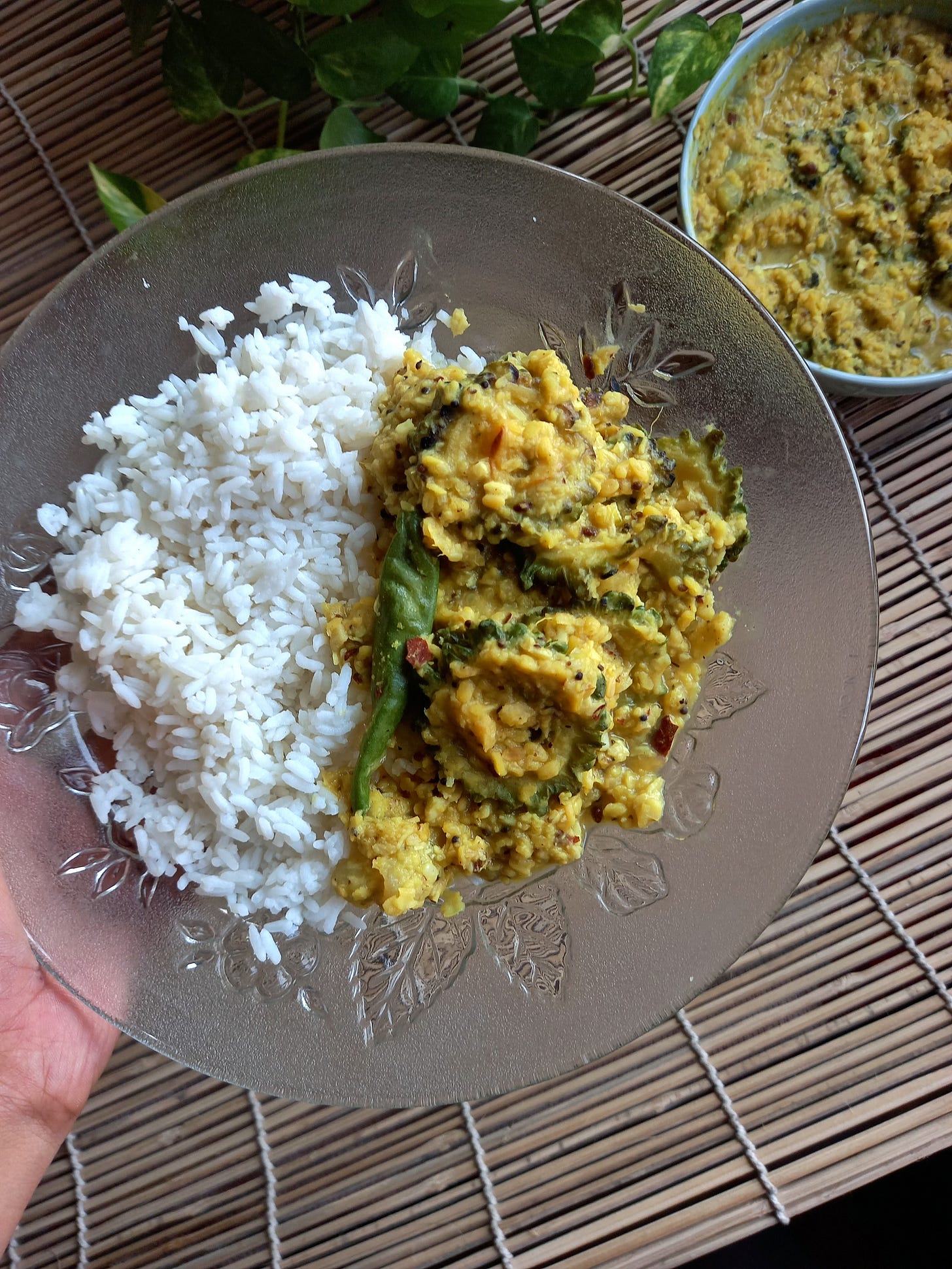Bitter Delights
Barsha Mallik shares two recipes centring bitter gourd – a dal and a stir-fry with potato – that celebrate the role of bitterness in Bengali cooking. Images by Barsha Mallik and Sanskriti Bist.
Good morning, and welcome to Vittles! Today, Barsha Mallik writes about the centrality of bitter flavours to Bengali cooking, and shares two recipes based around bitter gourd.
Issue 1 of our print magazine is still available for order on our website. If you would like to stock it at your shop or restaurant, please order via our distributor Antenne Books by emailing maxine@antennebooks.com and mia@antennebooks.com.
Bitter Delights
Recipes for teto-r dal with bitter gourd and korola alu bhaji (bitter gourd and potato stir-fry), plus an essay on bitterness in Bengali food. Words by Barsha Mallik. Images by Barsha Mallik and Sanskriti Bist.
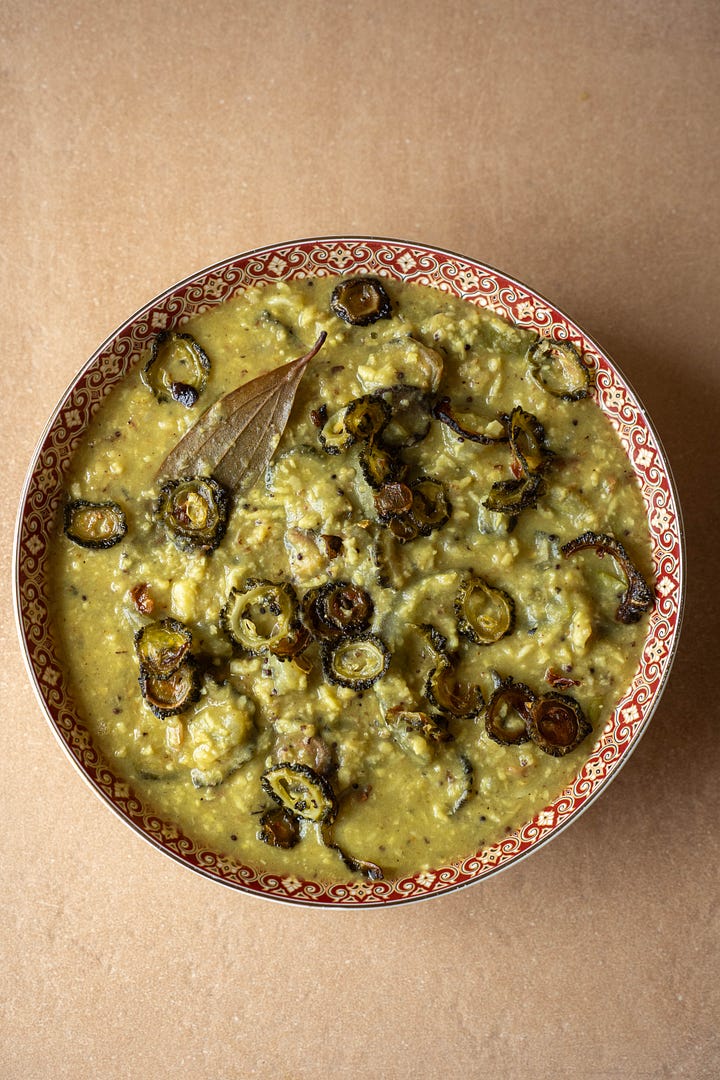
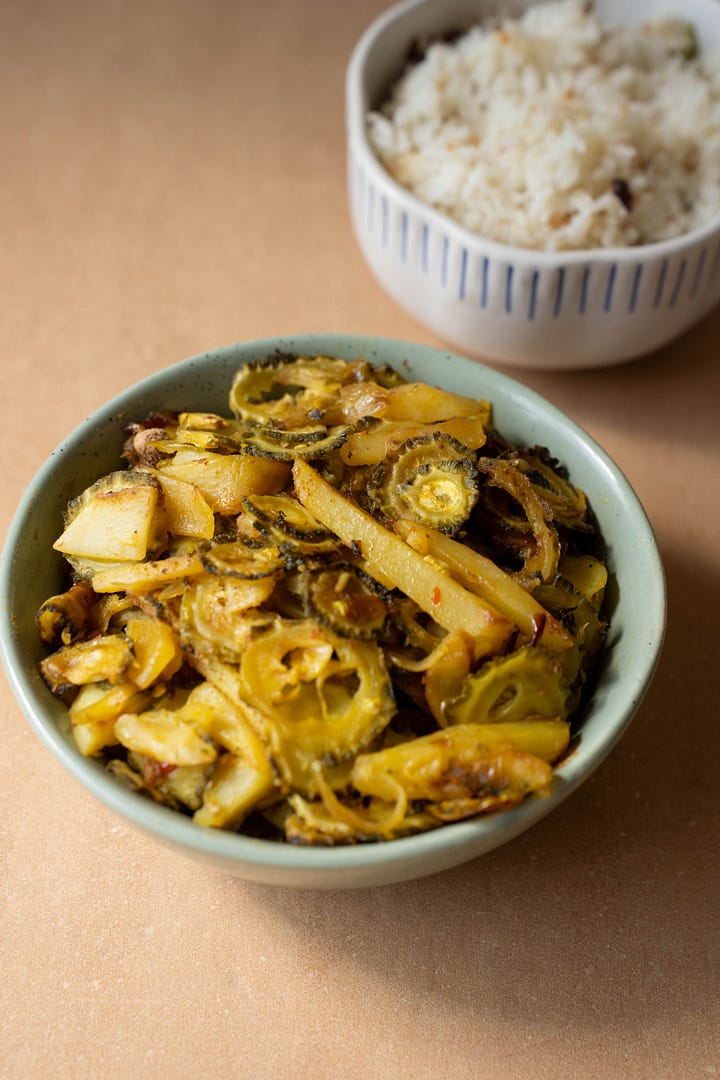
When outsiders talk about Bengal, they often rave about the sweets, the charm of its people, or the gentle lilt of its language. People rarely seem to notice that there is a quiet yet notable appreciation for the exact opposite: bitterness. Only the locals will tell you that we’ve been tasting bitterness every day, with almost every meal, for most of our lives.
I was a toddler, I think, when I was first introduced to bitter food. I don’t remember it, necessarily, but I’m sure it must have happened sometime around then – it’s inevitable in a Bengali family. ‘Teto diye age khete hoy’ – you should start your meal with the bitter – is one of those sayings every Bengali grows up hearing. Because I naturally liked bitter foods, I happily devoured every bite, which led the adults in my life to label me a ‘good child’; in Bengali society, there’s an underlying pride in eating bitter foods that comes from the idea that doing difficult things can be good for your health – and life. Whether we grimaced when coaxed into eating it, constantly protested, or grew up with an innate fondness for it, bitterness becomes a firm part of all our lives: before the dal or the fish curry, bitter makes an entrance.
Since spring has bloomed here in Dhaka, the market has been full of all sorts of bitter leaves, twigs, herbs, and vegetables. On every street corner, vendors oversee mounds of korola (bitter gourds) or carts overflowing with bitter greens – shorisha shaak (mustard greens), paat shaak (jute leaves), helencha shak (buffalo spinach), thankuni pata (gotu kola or Indian pennyworth), and gime shak (Indian chickweed). Walking through the streets in the afternoon heat, you never quite know what you’ll stumble upon at the next turn.
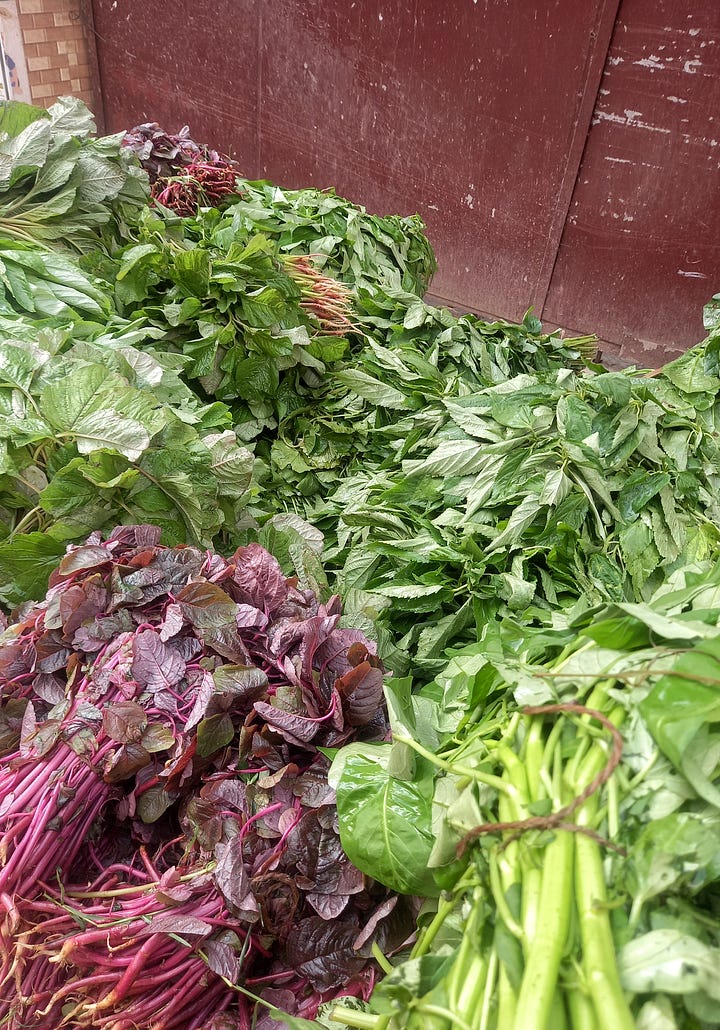
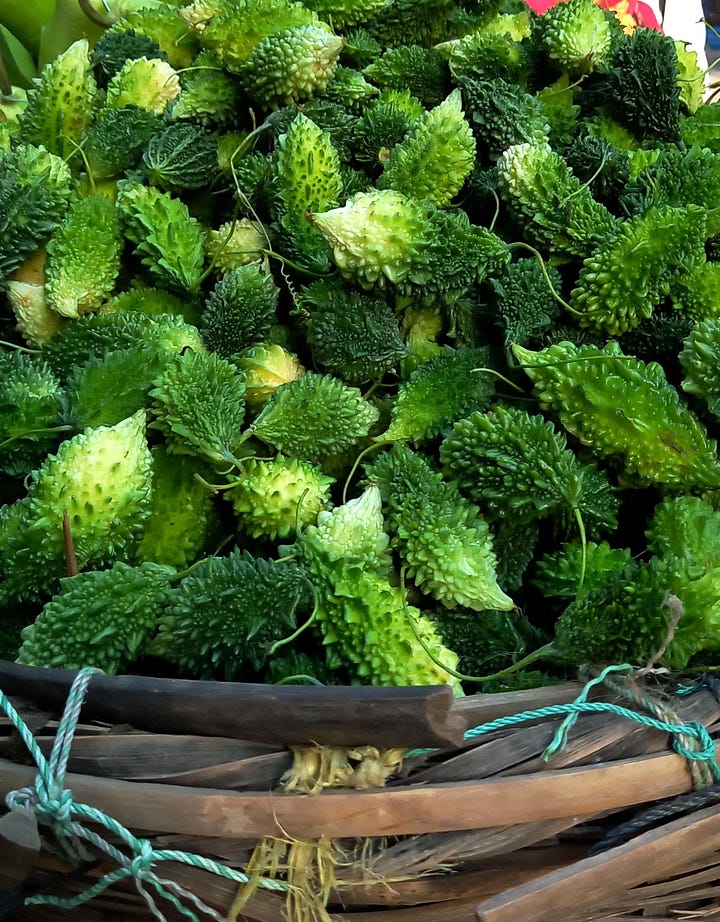
Everyone here has at least one favourite bitter dish, their own preferred way of cooking a particular bitter ingredient. When the first jute leaves hit the market, my mother buys a bunch almost every day to make her garlicky daal with slippery paat shak, while neem or jute leaf fritters barely last a minute on my sister’s plate. An auntie who once told me that my attitude was as bitter as korola loves shorisha shaak bhaji (stir fry) with rice for lunch; another keeps jars of dried neem, jute, and parijat leaves in her kitchen for sprinkling into dishes here and there, her culinary secret.
In Bengali cuisine, bitterness doesn’t always have to be in your face. Across the border, in West Bengal, it’s usually mellowed by a splash of milk or a hint of sugar. But here in Bangladesh, we tend to lean into the sharp edges more, using green chilli or garlic or both to balance it out. Whether potent or subtle, bitterness is a staple in Bengali kitchens, but one that rarely shows up in celebratory meals or restaurant menus (perhaps that’s why the West remains unfamiliar with this side of our cuisine). So, teto continues to be intimate – home food, part of basic everyday meals: quiet, consistent, and oddly comforting.
Here I’m sharing two of my favourite bitter recipes that are best eaten around a family table. Teto-r dal with fried bitter gourd, served with a wedge of lemon, is the perfect food for a sticky hot day, while the korola alu bhaji, a bitter gourd and potato stir-fry, never fails to satisfy my craving for light indulgence.
Some Notes on Bitter Gourds
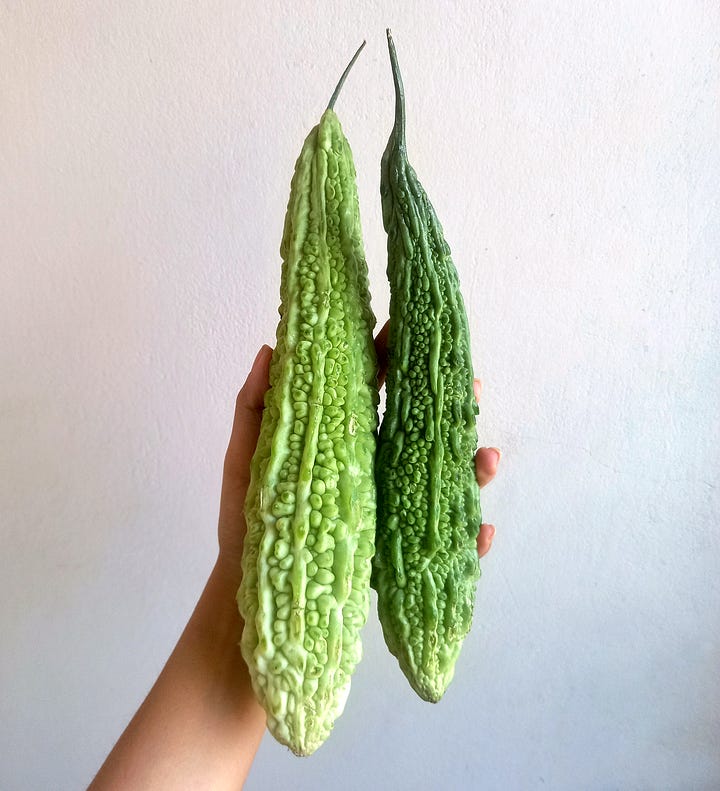
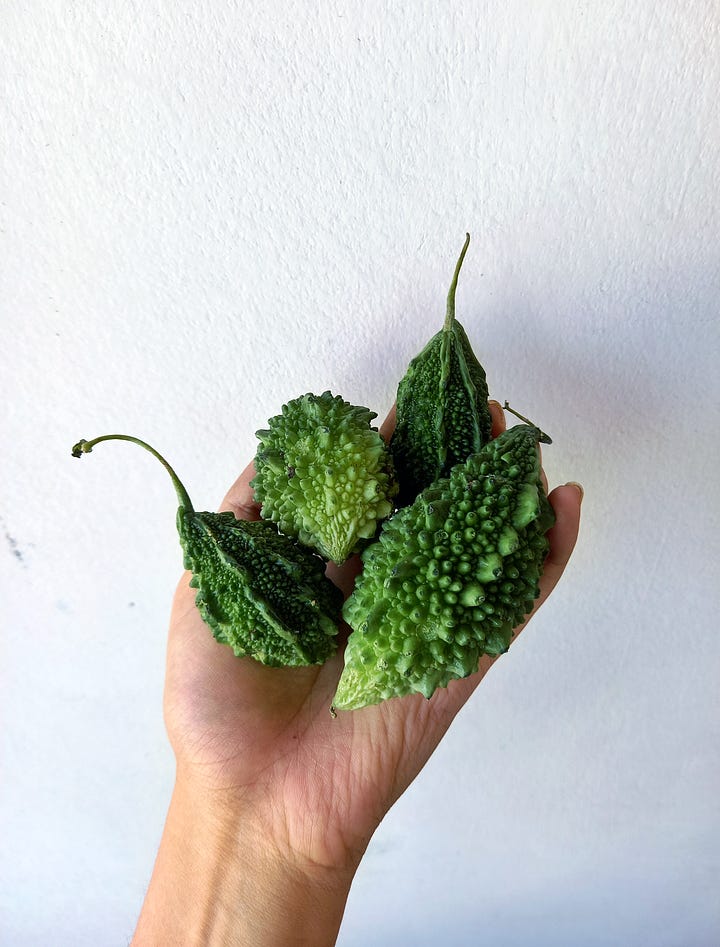
Although various varieties of bitter gourd are available, Chinese bitter gourd and korola (desi or South Asian bitter gourd) are the most commonly found both in Bangladesh and the UK. Although I prefer korola, it is more bitter, so bear that in mind if you haven’t tried bitter gourd before. In the UK, you should be able to get bitter gourd in South Asian groceries.
You need to be careful of proportions when cooking with bitter gourd – adding too much can render your dish inedible – so stick closely to the quantities I provide below. But there are some easy ways to reduce the bitterness without losing flavour, including washing the gourd and patting it dry before slicing, and avoiding soaking in water or cooking in iron pans, both of which can increase bitterness. Don’t be too worried though: if all else fails, adding a spoonful of ghee either to the dish itself or to some rice can help to balance things out.
Teto-r Dal with Bitter Gourd
Note: you will need a blender for this recipe.



